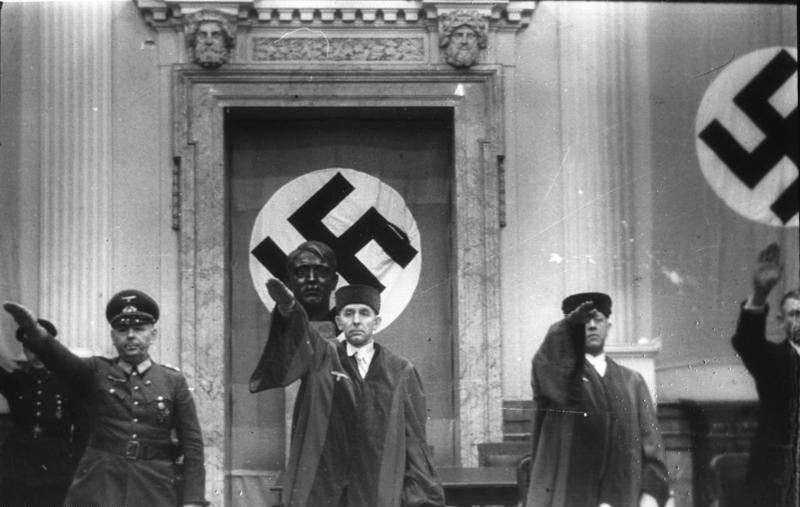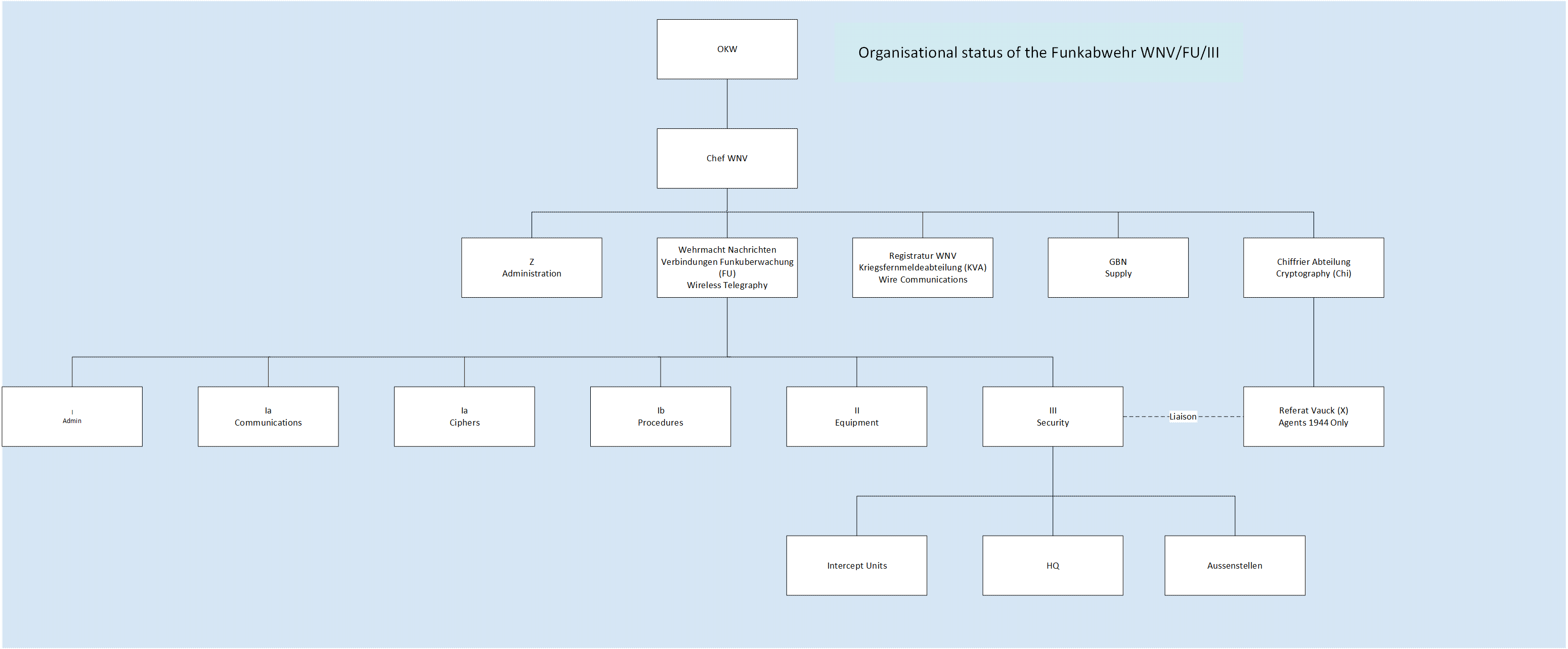|
People Of The Red Orchestra
This is a list of participants, associates and helpers of, and certain infiltrators (such as Heinz Pannwitz) into, the Red Orchestra (german: Die Rote Kapelle) as it was known in Germany. Red Orchestra was the name given by the Abwehr to members of the German resistance to Nazism and anti-Nazi resistance movements in Allied or occupied countries during World War II. Many of the people on this list were arrested by the Abwehr or Gestapo. They were tried at the Nazi Imperial War Court before being executed either by hanging or guillotine, unless otherwise indicated. As the SS-Sonderkommando also took action against Soviet espionage networks within Switzerland, people who worked there are also included here. Group organisational diagrams The following meticulously researched hierarchy diagrams were created by the Joint security service that consisted of the MI6 and the CIA between 1945 and 31 December 1949. File:Rote Kapelle.png, Overall organisational diagram of all anti-fasci ... [...More Info...] [...Related Items...] OR: [Wikipedia] [Google] [Baidu] |
Heinz Pannwitz
Heinz Michael Pannwitz ( Heinz Paulsen; 28 July 1911, Berlin – 1975) was a German Nazi Gestapo officer and later Schutzstaffel (SS) officer. Pannwitz was most notable for directing the investigation into the assassination of Obergruppenführer Reinhard Heydrich on 27 May 1942 in Prague. In the last two years of the war, Pannwitz ran the Sonderkommando Rote Kapelle, a combined '' Abwehr'' and Gestapo counterintelligence operation against the Red Orchestra espionage network, in France and the Low Countries. Life As a child, Pannwitz belonged to the Christliche Pfadfinderschaft Deutschlands scout association. As a youth Pannwitz was a member of the Evangelical Church in Germany but left due to divisions in the church over their stance towards Hitler and the Nazis. After completing his schooling, Pannwitz was employed as a fitter, but by 1931 was unemployed. Pannwitz then attended university to study theology and philosophy. Military career In February 1932, Pannwitz joine ... [...More Info...] [...Related Items...] OR: [Wikipedia] [Google] [Baidu] |
Leopold Trepper
Leopold Zakharovich Trepper (23 February 1904 – 10 January 1982) was a Polish Communist and career Soviet agent of the Red Army Intelligence. With the code name Otto'','' Trepper had worked with the Red Army since 1930. He was also a resistance fighter and journalist. Trepper and Richard Sorge, a Soviet military intelligence officer, were the two main Soviet agents in Europe and were employed as ''roving agents'' to set up espionage networks throughout Europe and in Japan. While Sorge was a penetration agent, Trepper ran a series of clandestine cells for organising agents in Europe. Trepper used the latest technology at the time—small wireless radios—to communicate with Soviet intelligence. Although the Funkabwehr's monitoring of the radios transmission eventually led to the destruction of Treppers organisation, this sophisticated use of the technology-enabled the espionage organisation to behave as a network with the ability to achieve tactical surprise and deliver high- ... [...More Info...] [...Related Items...] OR: [Wikipedia] [Google] [Baidu] |
People's Court (Germany)
The People's Court (german: Volksgerichtshof, acronymed to ''VGH'') was a ' ("special court") of Nazi Germany, set up outside the operations of the constitutional frame of law. Its headquarters were originally located in the former Prussian House of Lords in Berlin, later moved to the former '' Königliches Wilhelms-Gymnasium'' at Bellevuestrasse 15 in Potsdamer Platz (the location now occupied by the Sony Center; a marker is located on the sidewalk nearby). The court was established in 1934 by order of Reich Chancellor Adolf Hitler, in response to his dissatisfaction at the outcome of the Reichstag fire trial in front of the Reich Court of Justice (''Reichsgericht'') in which all but one of the defendants were acquitted. The court had jurisdiction over a rather broad array of "political offenses", which included crimes like black marketeering, work slowdowns, defeatism, and treason against Nazi Germany. These crimes were viewed by the court as ''Wehrkraftzersetzung'' ("the dis ... [...More Info...] [...Related Items...] OR: [Wikipedia] [Google] [Baidu] |
Hamburg
(male), (female) en, Hamburger(s), Hamburgian(s) , timezone1 = Central (CET) , utc_offset1 = +1 , timezone1_DST = Central (CEST) , utc_offset1_DST = +2 , postal_code_type = Postal code(s) , postal_code = 20001–21149, 22001–22769 , area_code_type = Area code(s) , area_code = 040 , registration_plate = , blank_name_sec1 = GRP (nominal) , blank_info_sec1 = €123 billion (2019) , blank1_name_sec1 = GRP per capita , blank1_info_sec1 = €67,000 (2019) , blank1_name_sec2 = HDI (2018) , blank1_info_sec2 = 0.976 · 1st of 16 , iso_code = DE-HH , blank_name_sec2 = NUTS Region , blank_info_sec2 = DE6 , website = , footnotes ... [...More Info...] [...Related Items...] OR: [Wikipedia] [Google] [Baidu] |
Bästlein-Jacob-Abshagen Group
The Bästlein-Jacob-Abshagen Group was a German resistance group that developed around the core members Bernhard Bästlein, Franz Jacob and Robert Abshagen. It fought the National Socialist (Nazi) regime from 1940 till the end of the war in 1945. It consisted of about 300 members in over 30 groups in Hamburg factories, making it the biggest regional Nazi resistance group in the history of Hamburg. History In 1940, Bästlein, Jacob, Abshagen and Gustav Bruhn were released from Sachsenhausen concentration camp. They immediately set about building a Resistance organization after secret meetings with the remnants of various Resistance groups of the Communist Party of Germany and other small groups.Short biography of Bästlein. German Resistance Memorial Center. Retrieved March 22, 2010 [...More Info...] [...Related Items...] OR: [Wikipedia] [Google] [Baidu] |
Robert Abshagen
Robert Abshagen (12 January 1911 in Hamburg – 10 July 1944) was a German Resistance fighter against National Socialism and a Communist. Biography Abshagen first worked in insurance, then as a sailor and finally, as a construction worker. He joined the Communist Party of Germany in 1931. Beginning in 1933, he took part in the illegal German Resistance in Hamburg against Nazism. In 1934, he was sentenced in Hamburg state supreme court of "Vorbereitung zum Hochverrat" (intent to commit treason) to two and a half years at hard labor in a '' Zuchthaus'', which he spent in Bremen-Oslebshausen Prison in Gröpelingen. After serving his sentence, he was sent to Sachsenhausen concentration camp. While at Sachsenhausen, Absagen and other prisoners, including Bernhard Bästlein, held cultural and literary gatherings. As the Nazis began to deport more Jews after Kristallnacht, they also plundered their books and stockpiled them in concentration camps. In 1936-1937, the Sachsenhausen libr ... [...More Info...] [...Related Items...] OR: [Wikipedia] [Google] [Baidu] |
Funkabwehr
Funkabwehr, or ''Radio Defense Corps'' was a radio counterintelligence organization created in 1940 by Hans Kopp of the German Nazi Party High Command during World War II. It acted as the principal organization for radio Counterintelligence, i.e. for the monitoring of illicit broadcasts. The formal name of the organization was the Funkabwehr des Oberkommandos der Wehrmacht (german: Oberkommando der Wehrmacht, Wehrmachtnachrichtenverbindungen, Funküberwachung) (OKW/WNV/FU). Its most notable breakthrough occurred on 26 June 1941, when tracing teams at the Funkabwehr station at Zelenogradsk made the discovery of the Red Orchestra (espionage), Rote Kapelle, the anti-Nazi resistance movement in Berlin and two Soviet Union, Soviet Main Directorate of State Security, espionage rings operating in German-occupied Europe and Switzerland during World War II. The Funkabwehr was dissolved on 30 April 1945. History Purpose The Radio Defense Corps of the OKW was given the task of picking up a ... [...More Info...] [...Related Items...] OR: [Wikipedia] [Google] [Baidu] |
Henry Robinson (spy)
Henry Robinson (8 May 1897 – 1944), sometimes known as Henri Robinson, was a Belgian Communist and later intelligence agent of the Communist International (Comintern). Robinson was a leading member of the Red Orchestra in Paris. Robinson used a number of code names(Andre, Lucien, Leo, Giocomo) and aliases (Otto Wehrli, Albert Gottlieb Bucher, Alfred Merian, Harry Leon, Alfree Duyen, Harry Merian) Life Born in Brussels, Robinson grew up in Belgium and was the child of David Robinson (born in Vilna Governorate) and Anna Cerhannovsky (born in Warsaw). During World War I, he studied in Geneva. After the war, Robinson was associated with German communist Willi Münzenberg and Swiss communist Jules Humbert-Droz in the Young Communist International, In 1923, Robinson was in charge of the AM-Apparat for military and political work in the Rhineland and was Political Director of the Young Communist League of Germany's Ruhr district and attended conferences in Berlin, where he met his part ... [...More Info...] [...Related Items...] OR: [Wikipedia] [Google] [Baidu] |
Funkabwehr
Funkabwehr, or ''Radio Defense Corps'' was a radio counterintelligence organization created in 1940 by Hans Kopp of the German Nazi Party High Command during World War II. It acted as the principal organization for radio Counterintelligence, i.e. for the monitoring of illicit broadcasts. The formal name of the organization was the Funkabwehr des Oberkommandos der Wehrmacht (german: Oberkommando der Wehrmacht, Wehrmachtnachrichtenverbindungen, Funküberwachung) (OKW/WNV/FU). Its most notable breakthrough occurred on 26 June 1941, when tracing teams at the Funkabwehr station at Zelenogradsk made the discovery of the Red Orchestra (espionage), Rote Kapelle, the anti-Nazi resistance movement in Berlin and two Soviet Union, Soviet Main Directorate of State Security, espionage rings operating in German-occupied Europe and Switzerland during World War II. The Funkabwehr was dissolved on 30 April 1945. History Purpose The Radio Defense Corps of the OKW was given the task of picking up a ... [...More Info...] [...Related Items...] OR: [Wikipedia] [Google] [Baidu] |
Marseilles
Marseille ( , , ; also spelled in English as Marseilles; oc, Marselha ) is the prefecture of the French department of Bouches-du-Rhône and capital of the Provence-Alpes-Côte d'Azur region. Situated in the camargue region of southern France, it is located on the coast of the Gulf of Lion, part of the Mediterranean Sea, near the mouth of the Rhône river. Its inhabitants are called ''Marseillais''. Marseille is the second most populous city in France, with 870,731 inhabitants in 2019 (Jan. census) over a municipal territory of . Together with its suburbs and exurbs, the Marseille metropolitan area, which extends over , had a population of 1,873,270 at the Jan. 2019 census, the third most populated in France after those of Paris and Lyon. The cities of Marseille, Aix-en-Provence, and 90 suburban municipalities have formed since 2016 the Aix-Marseille-Provence Metropolis, an indirectly elected metropolitan authority now in charge of wider metropolitan issues, with a populatio ... [...More Info...] [...Related Items...] OR: [Wikipedia] [Google] [Baidu] |
Anatoly Gurevich
Anatoly Markovich Gurevich (russian: Анатолий Маркович Гуревич; 7 November 1913 – 2 January 2009) was a Soviet intelligence officer. He was an officer in the GRU operating as "разведчик-нелегал" (''razvedchik-nelegal'', illegal resident spy) in Soviet intelligence parlance. Gurevich was a central figure in the anti-Nazi Red Orchestra in France and Belgium during World War II. Gurevich had a number of aliases that he used to disguise his identity, including Vincente Sierra, Victor Sukolov, Arthus Barcza and Simon Urwith. He also used a number of code names for radio communications, including ''Kent'', ''Fritz'', ''Manolo'', ''Dupuis'' and ''Lebrun''. Gurevich ran one of the seven groups of networks, located in Belgium that were controlled by Leopold Trepper in France. He was the second leading Soviet agent in Europe during the war years. Upon his return to the Soviet Union in 1945, Gurevich was sentenced for treason and spent 15 years in ... [...More Info...] [...Related Items...] OR: [Wikipedia] [Google] [Baidu] |
Basile Maximovitch
Basile Maximovitch (2 July 1902, Chernigov - c. 6 July 1943, Plötzensee Prison, Berlin) was a Russian aristocrat and civil mining engineer. He became a Soviet agent by choice and subsequently became an important member of the Red Orchestra organisation in France during World War II. Maximovitch was the son of a Cavalry officer Baron Maximovitch, who held the rank of General, on the staff of Imperial Russian Army. Life Maximovitch was a Russian émigré who left Russia with his sister Anna Maximovitch in 1922 to escape the Russian Revolution. He arrived via Constantinople to settle in Paris, France. In Paris, the couple received help from Auxiliary bishop Emanuel-Anatole-Raphaël Chaptal de Chanteloup, who helped Maximovitch to train as civil engineer and enter the Lycée Saint-Louis-de-Gonzague as a teacher. Through Chaptal, Maximovitch developed extensive connections with white émigré communities in Paris and abroad. On 31 May 1940, he was interned as a foreign suspect ... [...More Info...] [...Related Items...] OR: [Wikipedia] [Google] [Baidu] |








